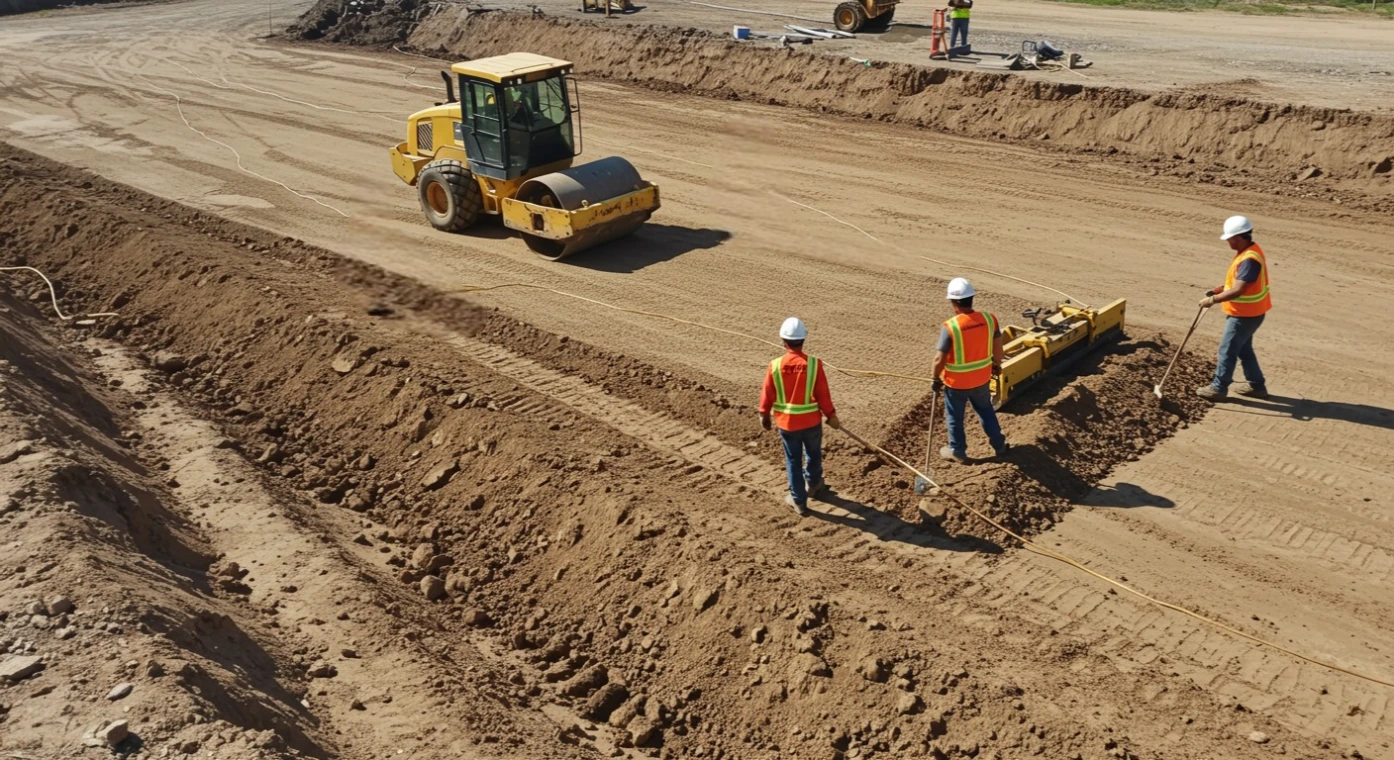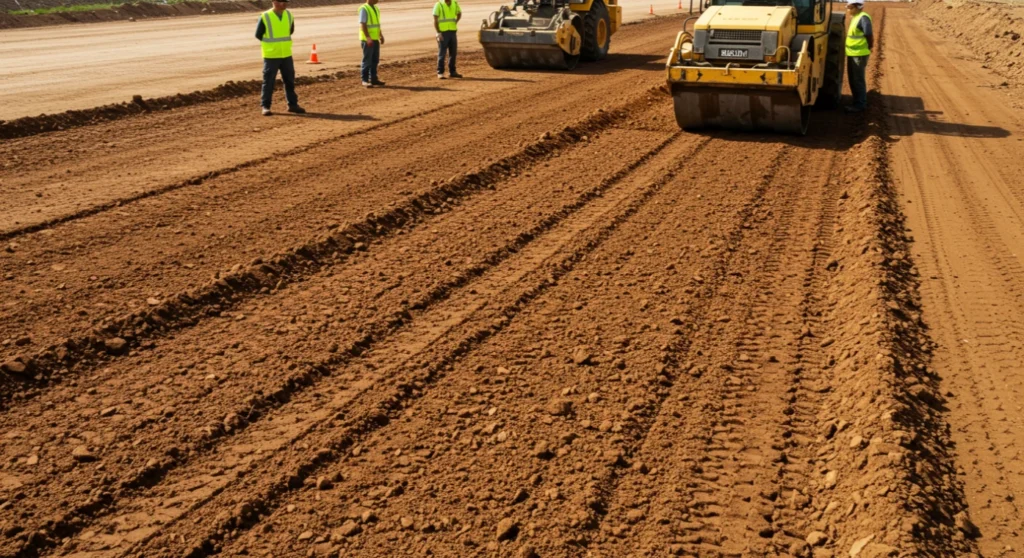Poorly stabilized soil compromises foundation performance. Long-term structural integrity depends on controlling soil movement, load-bearing capacity, and water retention. Without stabilization, foundations experience shifting, settling, and cracking, especially in regions with variable moisture conditions or expansive clay soils.
Soil stabilization strengthens the subgrade beneath structures, preventing degradation over time. It reduces differential settlement and increases resistance to seasonal changes. This article outlines the critical factors, material specifications, and technical comparisons necessary for making informed decisions based on firsthand experience with structural insulation and stabilization methods.
How Soil Stabilization Affects Foundation Performance
Soil types vary across Louisiana. High clay content, fluctuating moisture levels, and seasonal shrink-swell activity require active mitigation to protect building foundations. Stabilization techniques address these conditions directly.
Practical Benefits
- Minimizes Foundation Movement: Stabilized soil resists volume changes during wet and dry cycles.
- Improves Load Distribution: Reinforced soil supports uniform weight transfer from the structure.
- Reduces Moisture-Related Shifts: Prevents water infiltration and swelling in expansive soils.
- Extends Foundation Lifespan: Lower risk of cracking, tilting, or sagging over decades.
Soil Stabilization Methods Compared
| Method | Application Suitability | Performance in Wet Climates | Long-Term Durability | Common Use Cases |
|---|---|---|---|---|
| Lime Stabilization | Clay soils | Moderate | High | Roadbeds, house foundations |
| Cement Stabilization | Sandy and clay soils | High | Very High | Commercial building subgrades |
| Fly Ash Stabilization | Silt-heavy soils | Moderate | Moderate | Industrial sites, driveways |
| Enzyme-Based Stabilization | Organic-rich or loamy soils | Low | Variable | Light-use rural roads |
Bonus Tip: For southern Louisiana’s clay-dominant soils, lime and cement mixtures offer the best balance between water resistance and compaction strength.
Technical Specifications and Performance Metrics
| Property | Unstabilized Soil | Lime Stabilized | Cement Stabilized |
|---|---|---|---|
| Compressive Strength (psi) | 300–600 | 800–1500 | 1500–3000 |
| Plasticity Index | >20 | <10 | <8 |
| Permeability (cm/s) | 1 x 10^-3 | 1 x 10^-5 | 1 x 10^-6 |
| Load-Bearing Capacity (psf) | <2000 | 3000–4000 | 5000–7000 |
| Swell Potential | High | Low | Very Low |

Things to Consider Before Making a Decision
- Soil Type: Conduct geotechnical testing to identify clay, silt, sand, or organic matter content.
- Moisture Patterns: Evaluate seasonal wet/dry cycles common in Louisiana.
- Structure Type: Light residential builds may require different stabilization compared to commercial slabs.
- Access and Site Conditions: Equipment and mixing requirements differ per method.
- Longevity vs. Cost: Higher upfront costs often translate to lower maintenance over 20+ years.
Bonus Tip: Combine soil testing with infrared foundation scans to identify early-stage movement or moisture seepage.
Common Questions People Ask Before Choosing Soil Stabilization
How long does soil stabilization last?
Cement and lime stabilization methods typically last 30–50 years depending on soil conditions and installation quality.
Is it necessary for all properties?
Not all properties require stabilization. It is critical in high-clay, moisture-sensitive zones and for heavy structures.
What is the installation time?
Most residential soil stabilization jobs take 1–3 days, including curing time.
Can stabilization fix an existing cracked foundation?
Stabilization prevents further movement but does not reverse existing damage. It must be paired with structural repair.
Related Services Offered by Polyco Spray Foam Insulation
- Soil Stabilization: Reinforces subgrade conditions to prevent shifting and water intrusion.
- Concrete Lifting: Raises sunken slabs using pressure injection methods.
- Closed Cell Foam Insulation: Provides moisture resistance and adds subfloor rigidity.
- Open Cell Foam Insulation: Improves thermal efficiency in attics and wall cavities.
Industry Data and Supporting Sources
- Louisiana Geological Survey: “Soil Behavior and Moisture Trends in Southern Regions” (2024) – High-risk zones for foundation movement are clustered around Baton Rouge and Lafayette.
- National Ready Mixed Concrete Association (NRMCA): Stabilized bases reduce foundation failure by up to 40% over 25 years.
- U.S. Army Corps of Engineers (2023): Cement-treated soils show 5x the load-bearing strength compared to untreated counterparts.
Get Expert Insulation Guidance
Contact Polyco Spray Foam Insulation for guidance on soil stabilization or insulation applications suited for Louisiana properties.
Phone: +1 225-286-3546
Email: info@polycosprayfoam.com
FAQ About Long-Term Foundation Stability
What maintenance is needed after stabilization?
Monitor grading and drainage. Prevent water pooling around the structure.
Can I build immediately after stabilization?
Wait for the recommended curing period typically 24–72 hours depending on material used.
What signs indicate unstable soil?
Diagonal wall cracks, stuck doors, uneven floors, and exterior gaps near foundations.
Is foam insulation linked to soil stabilization?
Yes. Closed cell foam adds subfloor rigidity and moisture protection, complementing soil stabilization efforts.
How does Louisiana’s climate affect soil stabilization choices?
High rainfall and expansive clay require moisture-resistant materials like cement or closed cell foam.

